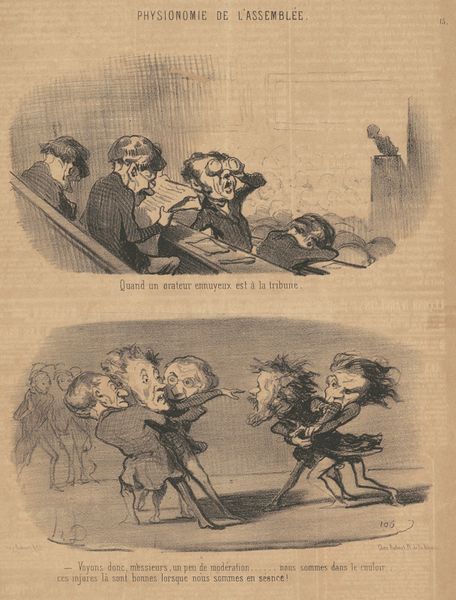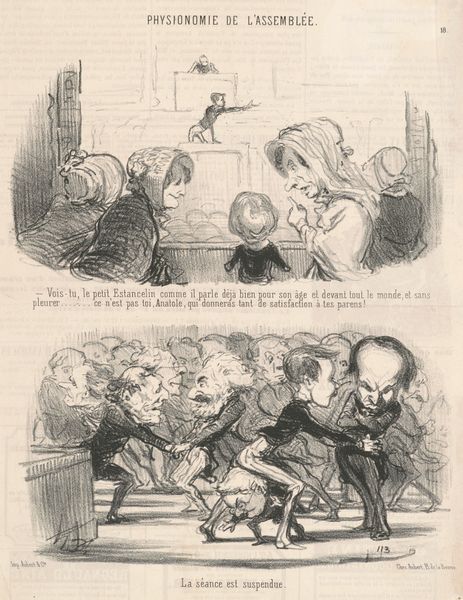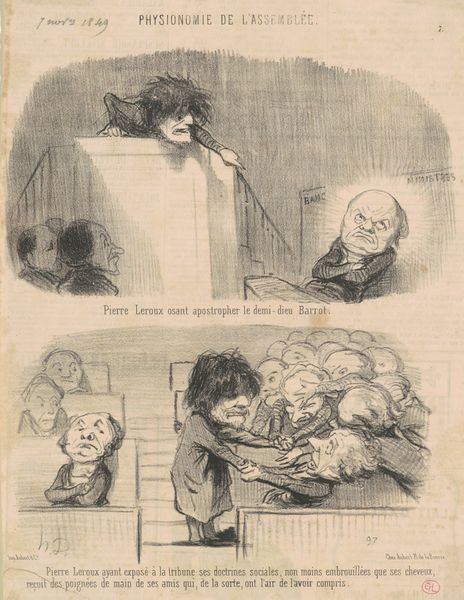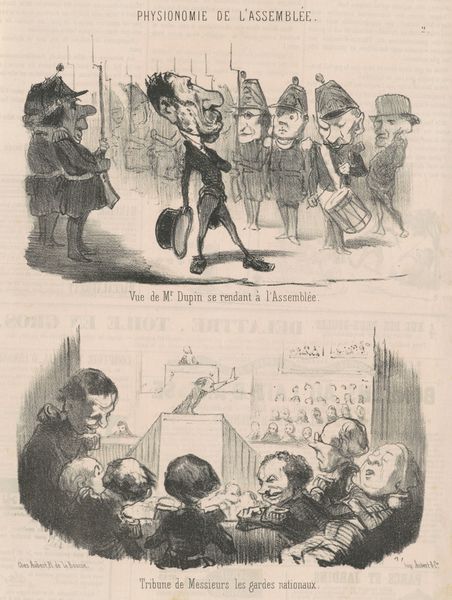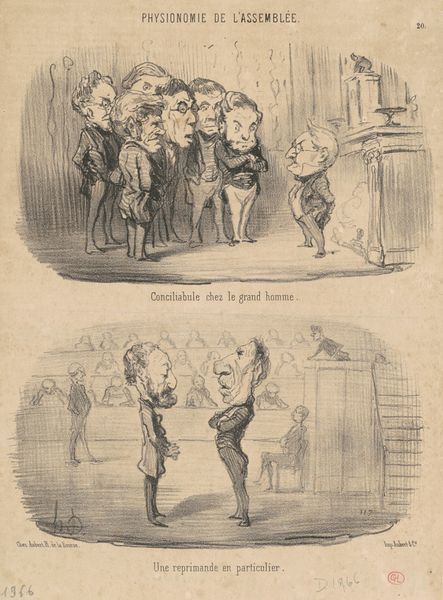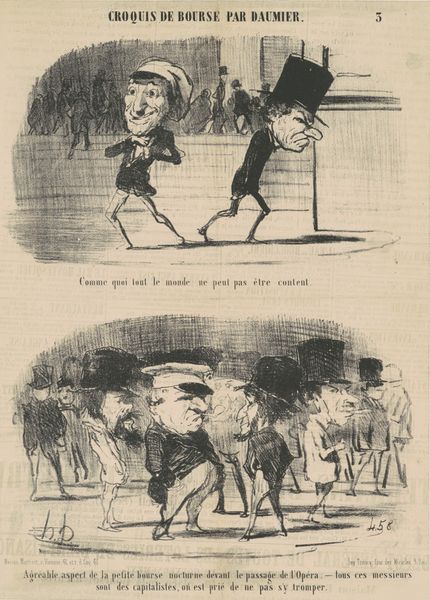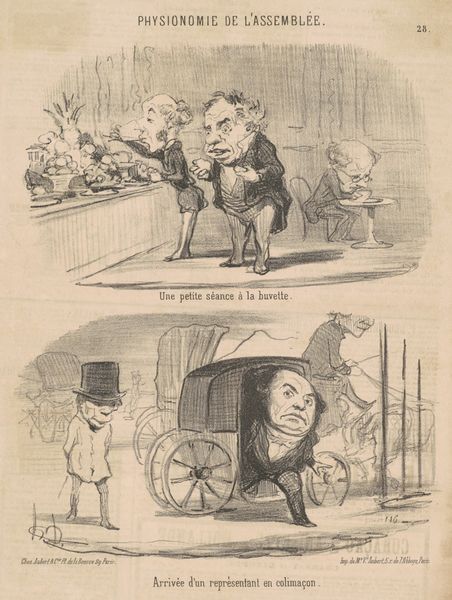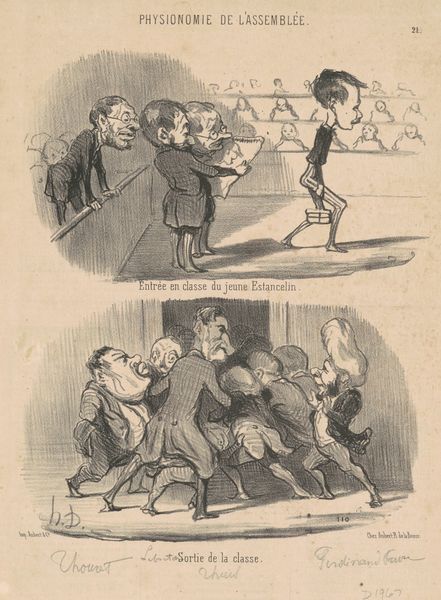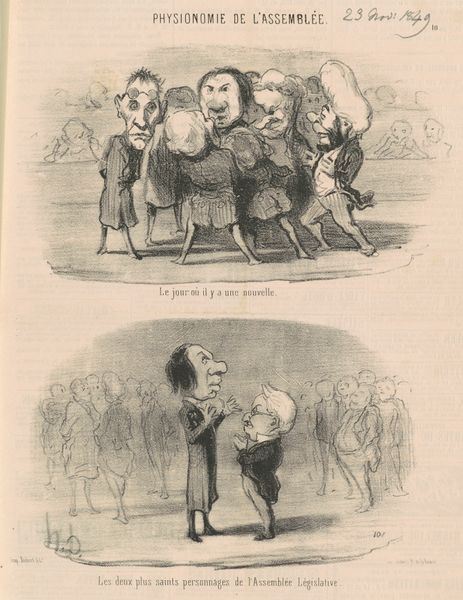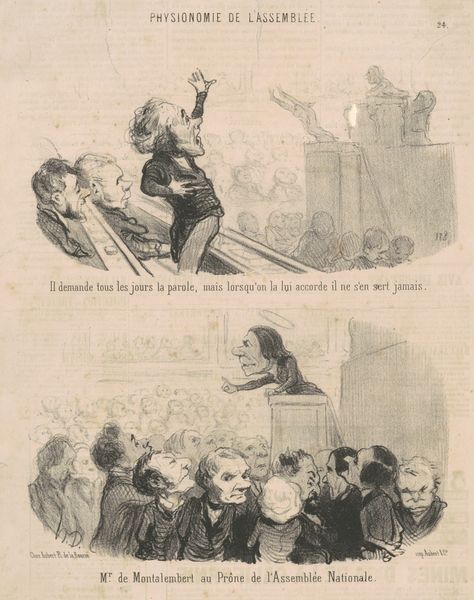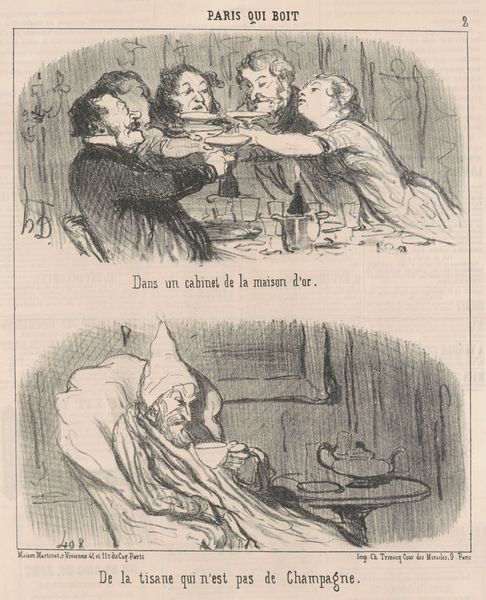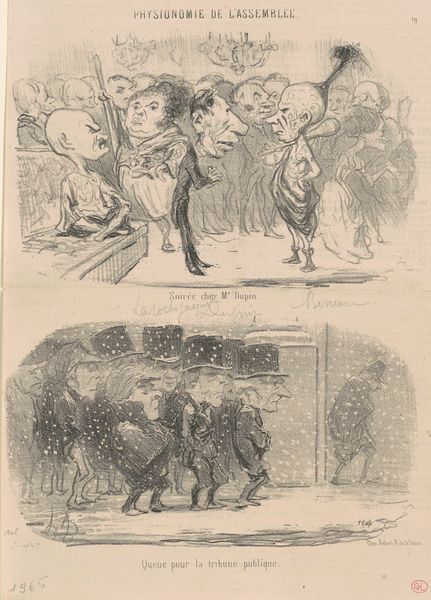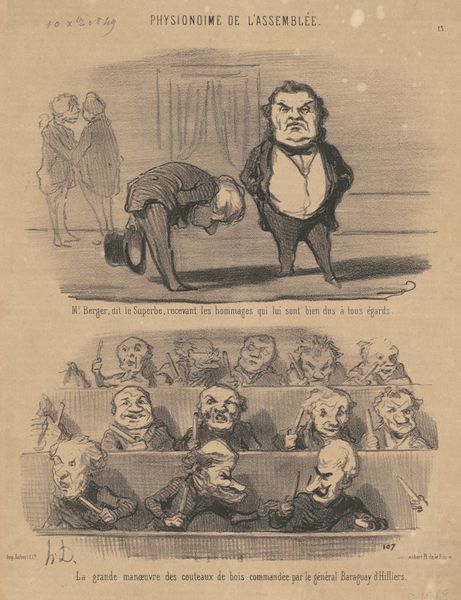
drawing, lithograph, print
#
drawing
#
lithograph
# print
#
caricature
#
romanticism
#
genre-painting
#
realism
Copyright: National Gallery of Art: CC0 1.0
Curator: What do you make of this lithograph by Honoré Daumier, dating from the 19th century, titled "M. Laurent (de l'Ardèche) Passant ..."? Editor: It looks like a cross between political commentary and dark fantasy. I am struck by the sharp contrast in tones. Tell me more about the production; was this intended as a one-off, or part of something bigger? Curator: It belongs to a larger series called "Physiognomy of the Assembly," focused on caricatures within the French Assembly, using lithography to reproduce images quickly. The prints themselves are both commentary and document. Editor: So, the method facilitates a mass-produced critique. Makes sense given the subject! I wonder how readily available these images were and their effect on the politicians. What material was Daumier using? I assume limestone or zinc plates? Curator: Yes, the lithographic process allowed for widespread distribution of these satirical images. Consider how this resonates with archetypes in political life. What about the almost demon-like figures in the audience; do they tap into a deeper well of popular fears regarding those in power? Editor: The scale feels significant here. He clearly dwarfs the 'ministers' while the 'apostrophes' below appear wild and erratic. The material, printed matter of course, gives agency. They make real human problems feel larger. The assembly’s body language emphasizes rigidity vs expression of its members. Curator: The Romantic style blends with Realism, turning real people into grotesque figures. Each face tells a story, amplifying emotions and exposing vulnerabilities of a political organism through the very form of drawing and lithographic distribution. Editor: Yes, exactly. So it makes one consider how these politicians behaved vs what he captures here and if it's real or performative and intended as theater? Daumier’s ability to capture these dynamics through mass production provides tools to explore, subvert, and even satirize centers of powers that still shape our lives today. Curator: A stark, potent reminder that the images we circulate can indeed become the reality, reflecting our societal anxieties and hopes. Editor: The way it ties commentary, method and critique into a unified experience makes it hard to deny its raw energy.
Comments
No comments
Be the first to comment and join the conversation on the ultimate creative platform.
